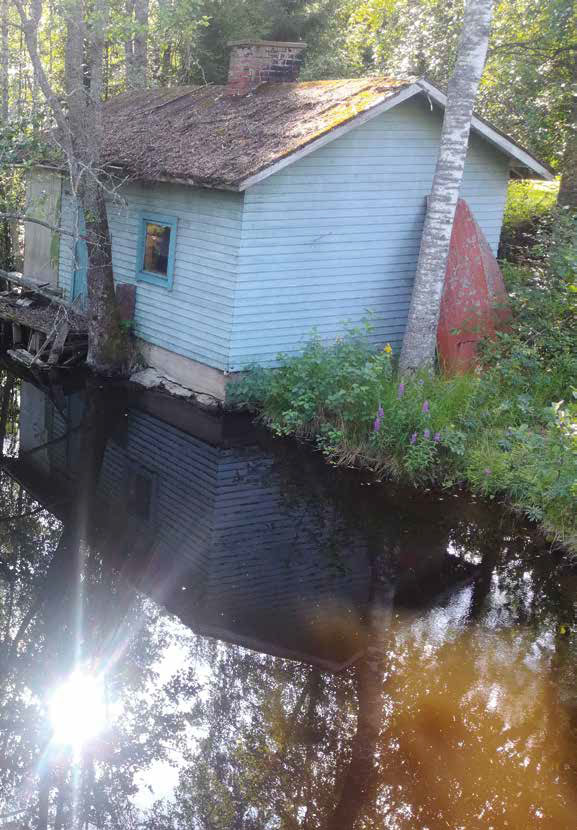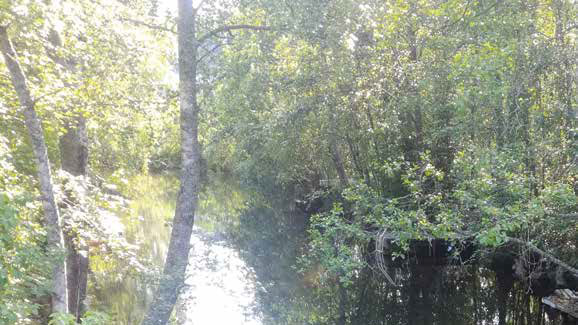The river Helisevänjoki springs from the lakes of Ruokolahti, traverses national boundaries and runs into the mighty river Vuoksi. In the Viking era it was the light traffic route of its time. Combined with the lake Ladoga and inland waterways, the river has been a force both connecting and dividing peoples and eras.
It is said that the village of Kirvu, in today’s Russia, was established when two groups of people travelling by row-boat down the Vuoksi could not agree on the route. The smaller group of Karelians parted company or kirposi from the others here and arrived on the shores of Helisevänjoki. They became known as kirvulaiset and their stopping-off place was named the village of Kirvu.
The riversides have seen people fishing, catching crayfish, floating timber and harnessing hydropower for turning millstones and circular saws at the sawmill. Breaks from work were spent taking saunas and dips in the river’s cool may have been the last one, like the farmer who boasted of his swimming prowess and showed off by going for a swim regardless of others trying to deter him. When the farmer entered the water, he yelped just once and sank to the bottom. Those who witnessed the incident swore they had heard a voice from somewhere, as if commenting on the fate of the man in a hurry: ”Time rushes on, the man does not.”
The mill and sawmill are closely tied to the history of Helisevänjoki and the Niska-Pietilä area. There have been mills on the riverbank since the 1700s; the oldest remained in operation for a couple of hundred years. In the 1920s the farmers set up a cooperative, which produced both barley flour famous across the parish and high-quality sawn timber. But the hydropowered turbine was no help when the cooperative soon went bankrupt.
Nevertheless, the sawmill operation continued under new entrepreneurs, and timber products were even exported. Alongside it, a small industrial estate of barrel factories and brickworks rose by the river. The iron for the barrels was obtained from Imatra. It is said that the raw material of Russian bombs in the Winter War was this same iron, which the bomber ’birds’ now laid as ’eggs’ back in Finland.
The products of the brickworks became famous both inside and outside the Finnish borders, when a new local innovation made them porous and light. The lightweight bricks and special adhesive used to fix them were tested in the Tapiola garden city in Espoo, later designated a cultural heritage site of national importance.
The brickworks was replaced by timber house production in the 1960s and 70s, but this was forced to close down at the start of the 90s. All that remains are the big plans and empty buildings as reminders of the successful industrial past of the locality.
Yet, Helisevänjoki still continues to flow on, its waves carrying legends both old and new.
Text: Pekka Vartiainen
Pictures: Anu Nuutinen
Translation: Annira Silver
Location on map

The story and the pictures are a part of Tarinajoki book (River of Stories), made in Rural Explorer project. As part of a culture tourism project, stories arising from the body of folk narratives and history also have a function in relation to the productisation of tourism. The stories are linked to real locations.
